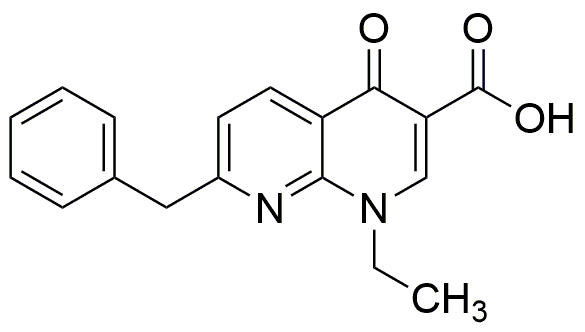Amfonelic acid is widely utilized in research focused on:
- Pharmaceutical Development: It serves as a key intermediate in the synthesis of various pharmaceutical compounds, particularly in the development of drugs targeting neurological disorders.
- Analytical Chemistry: This compound is used in analytical methods to detect and quantify specific biomolecules, aiding researchers in drug formulation and quality control.
- Biochemical Research: Amfonelic acid is employed in studies investigating enzyme inhibition, providing insights into metabolic pathways and potential therapeutic targets.
- Material Science: Its properties make it suitable for developing advanced materials, including coatings and polymers, enhancing their performance and durability.
- Environmental Studies: The compound is used in research to assess the impact of pharmaceuticals on ecosystems, contributing to the understanding of environmental pollution and sustainability.
General Information
Properties
Safety and Regulations
Applications
Amfonelic acid is widely utilized in research focused on:
- Pharmaceutical Development: It serves as a key intermediate in the synthesis of various pharmaceutical compounds, particularly in the development of drugs targeting neurological disorders.
- Analytical Chemistry: This compound is used in analytical methods to detect and quantify specific biomolecules, aiding researchers in drug formulation and quality control.
- Biochemical Research: Amfonelic acid is employed in studies investigating enzyme inhibition, providing insights into metabolic pathways and potential therapeutic targets.
- Material Science: Its properties make it suitable for developing advanced materials, including coatings and polymers, enhancing their performance and durability.
- Environmental Studies: The compound is used in research to assess the impact of pharmaceuticals on ecosystems, contributing to the understanding of environmental pollution and sustainability.
Documents
Safety Data Sheets (SDS)
The SDS provides comprehensive safety information on handling, storage, and disposal of the product.
Product Specification (PS)
The PS provides a comprehensive breakdown of the product’s properties, including chemical composition, physical state, purity, and storage requirements. It also details acceptable quality ranges and the product's intended applications.
Certificates of Analysis (COA)
Search for Certificates of Analysis (COA) by entering the products Lot Number. Lot and Batch Numbers can be found on a product’s label following the words ‘Lot’ or ‘Batch’.
*Catalog Number
*Lot Number
Certificates Of Origin (COO)
This COO confirms the country where the product was manufactured, and also details the materials and components used in it and whether it is derived from natural, synthetic, or other specific sources. This certificate may be required for customs, trade, and regulatory compliance.
*Catalog Number
*Lot Number
Safety Data Sheets (SDS)
The SDS provides comprehensive safety information on handling, storage, and disposal of the product.
DownloadProduct Specification (PS)
The PS provides a comprehensive breakdown of the product’s properties, including chemical composition, physical state, purity, and storage requirements. It also details acceptable quality ranges and the product's intended applications.
DownloadCertificates of Analysis (COA)
Search for Certificates of Analysis (COA) by entering the products Lot Number. Lot and Batch Numbers can be found on a product’s label following the words ‘Lot’ or ‘Batch’.
*Catalog Number
*Lot Number
Certificates Of Origin (COO)
This COO confirms the country where the product was manufactured, and also details the materials and components used in it and whether it is derived from natural, synthetic, or other specific sources. This certificate may be required for customs, trade, and regulatory compliance.


